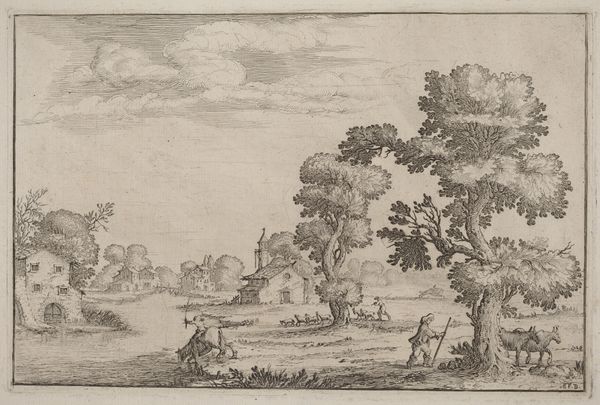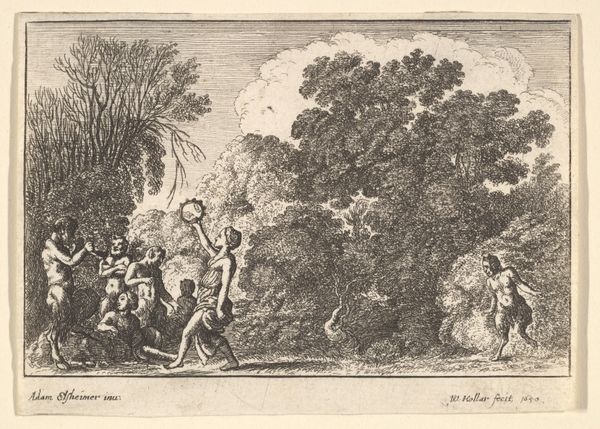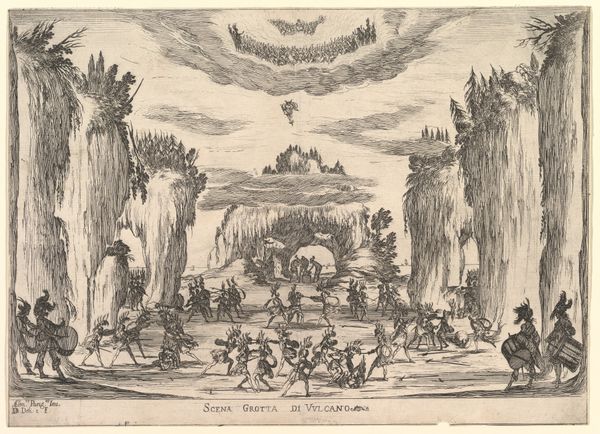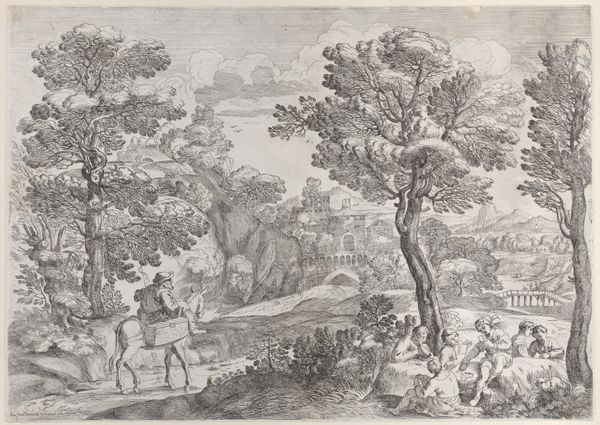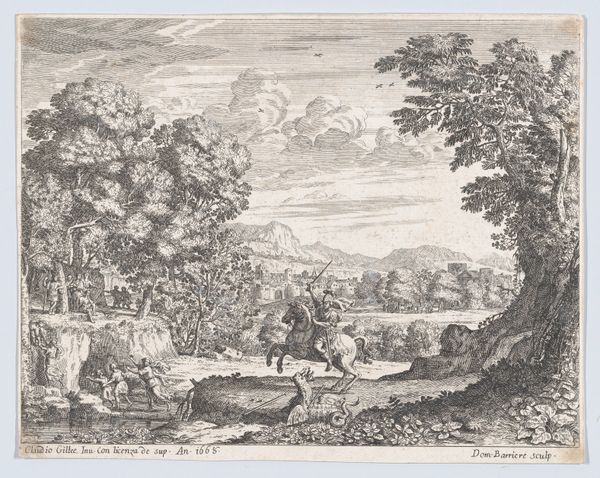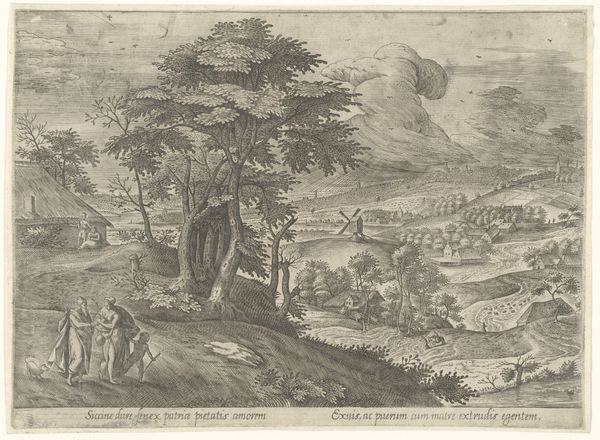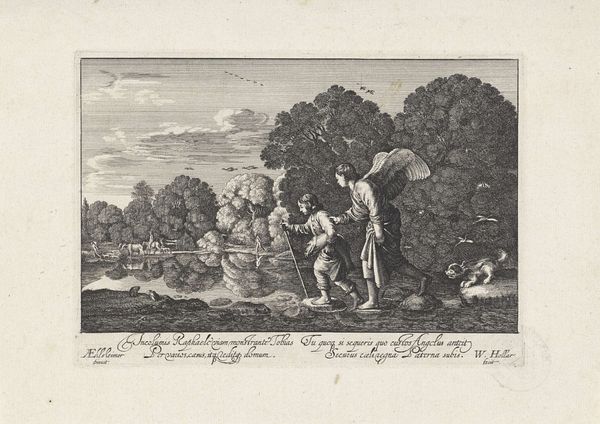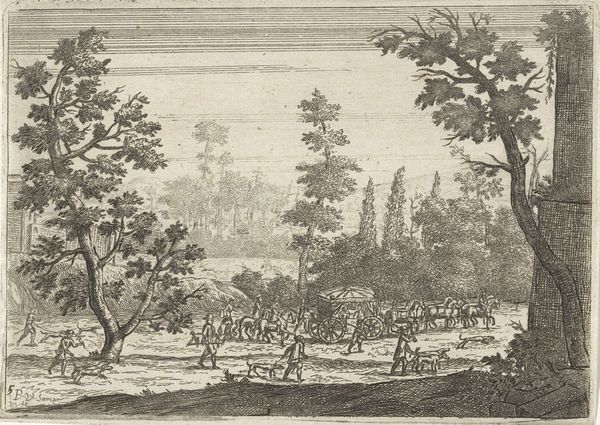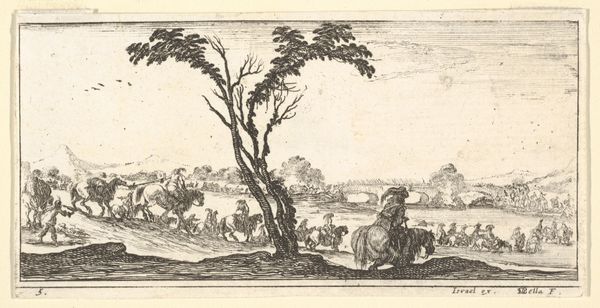
Fourth scene, the sea, from 'The marriage of the gods' (Le nozze degli Dei) 1637
0:00
0:00
drawing, print, etching
#
drawing
#
narrative-art
#
baroque
# print
#
etching
#
landscape
#
figuration
#
history-painting
Dimensions: Sheet: 7 15/16 x 11 1/16 in. (20.1 x 28.1 cm) Mount: 8 1/8 x 11 9/16 in. (20.6 x 29.3 cm)
Copyright: Public Domain
Curator: Right, let's look at this intricate etching by Stefano della Bella. It’s titled 'Fourth scene, the sea, from 'The marriage of the gods’ and was created around 1637. What jumps out at you? Editor: Chaos! Organized chaos, perhaps? The figures are playful but it feels a bit unsettling with all those bodies contorted in impossible ways against this almost hallucinatory backdrop. Curator: I see what you mean. There’s a dynamism that teeters on the edge of something slightly…feverish. This was part of a series commemorating the marriage of Ferdinando II de’ Medici and Vittoria della Rovere, so think extravagant courtly entertainment, transformed into print. Editor: So propaganda disguised as art. This seascape with its frolicking figures becomes a stage to legitimize the power, where everything's orchestrated, from the costumes to the very choreography of pleasure. And the title screams theatrical spectacle, really. "Quarta scena di mare"...the fourth scene, the sea. Curator: Exactly. Della Bella captures the lavish theatrical productions common during the Baroque era. Etching allowed him to disseminate these images, spreading the Medici's cultural influence. The level of detail, those feathery palms and craggy cliffs… Editor: It is exquisite, but I keep coming back to the figures. They appear to dance on the shore and cavort in the water without a care in the world. The elite indulge, while those without access struggle, as always. Is it simply revelry or willful obliviousness? Curator: A complex question, perhaps an invitation for critical reflection today. Then, its immediate function was clear. Now, viewed through the lens of our time, that opulence cannot help but suggest broader social questions of consumption. Editor: Absolutely, its ability to still evoke that kind of friction over centuries demonstrates its staying power. Curator: A spectacle frozen in ink, forever sparking new thoughts. Editor: That friction is exactly why it still resonates. Thank you for guiding my impressions!
Comments
No comments
Be the first to comment and join the conversation on the ultimate creative platform.

